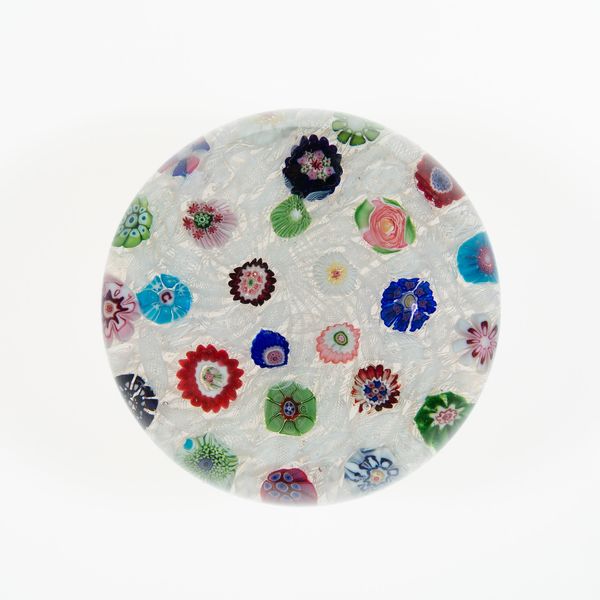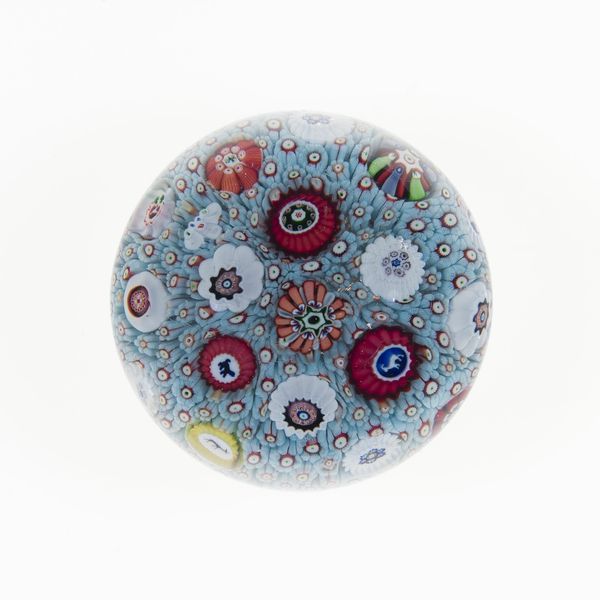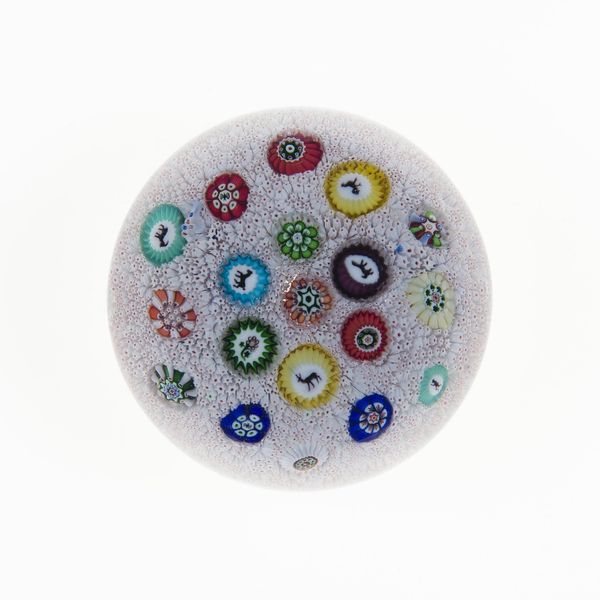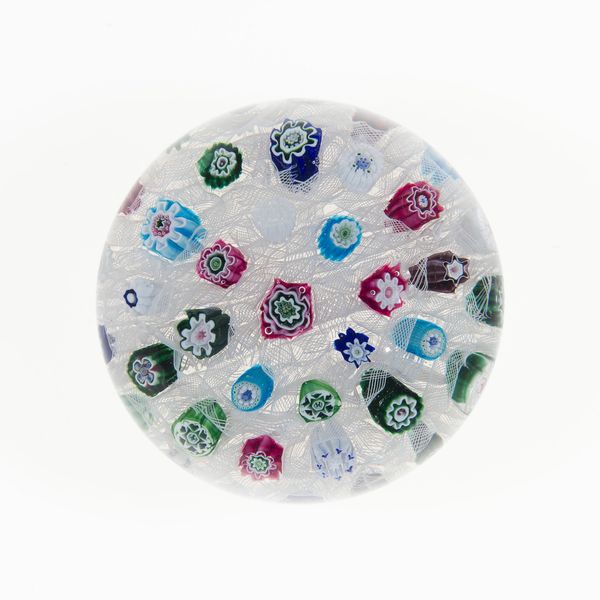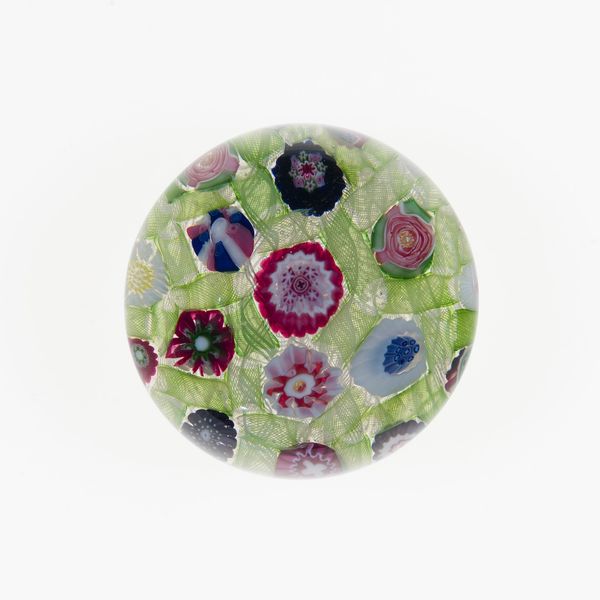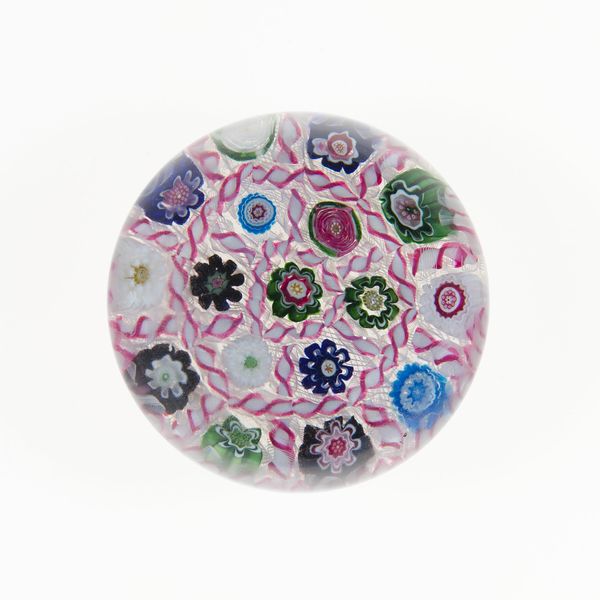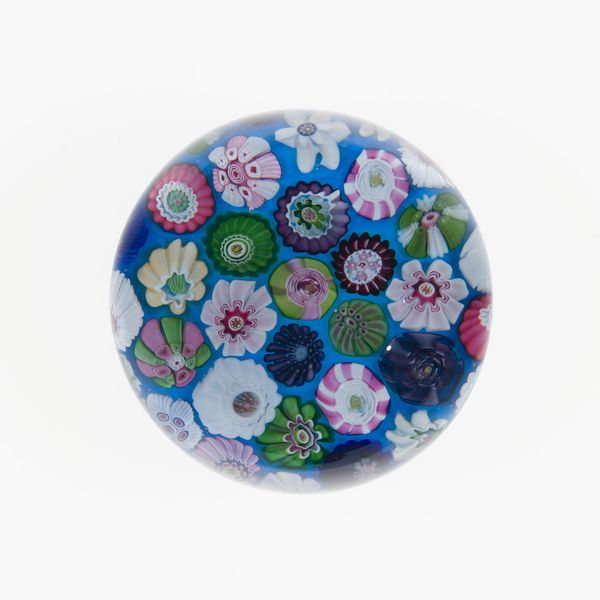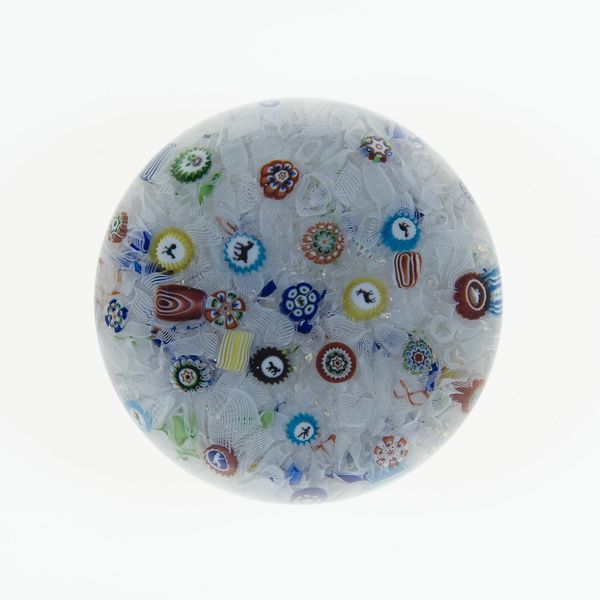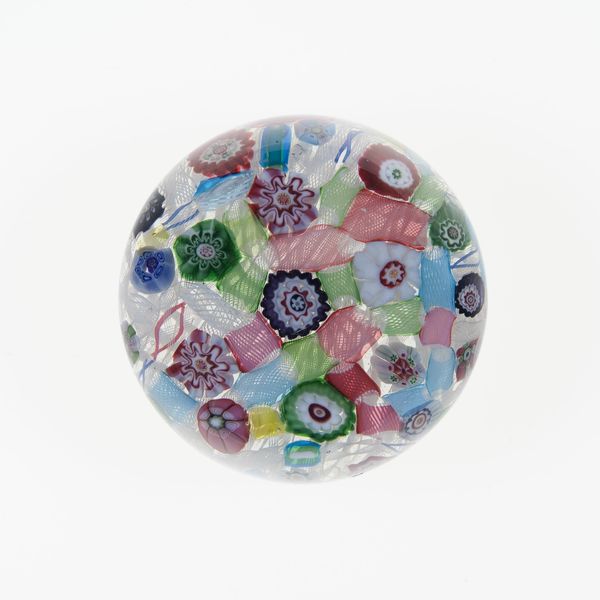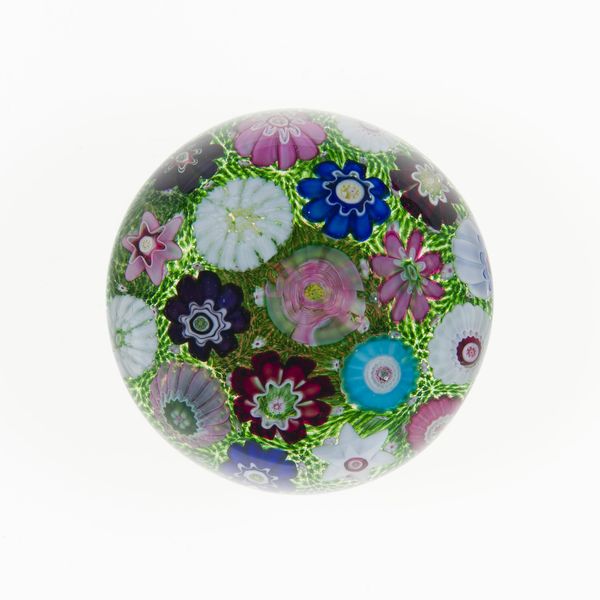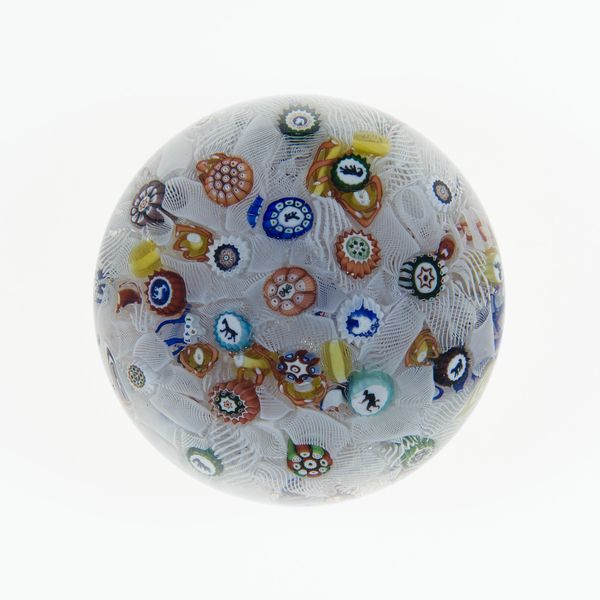
paper, glass, sculpture
#
paper
#
glass
#
sculpture
#
france
Dimensions: Diam. 7.9 cm (2 15/16 in.)
Copyright: Public Domain
Editor: Here we have "Paperweight," made in 1848 by Baccarat Glassworks. The piece combines paper and glass to create this spherical sculpture. The surface is packed with tiny colorful motifs. It’s quite charming, but I’m wondering about its cultural context. How do you interpret this work? Curator: Let's think about the Victorian era's fascination with both naturalism and industrial processes. This paperweight embodies that tension. The meticulous arrangement of these millefiori—or "thousand flowers"—suggests a scientific collection, a catalog of botanical specimens. Editor: So it’s not just decorative. Curator: Exactly. Glassmaking itself was undergoing rapid industrialization. Baccarat was at the forefront, mass-producing luxury items. This paperweight highlights the labor involved in each stage, from the glassblower’s breath shaping the form, to the assembly of tiny, manufactured components. Editor: That makes sense. Were paperweights common objects at the time? Curator: Increasingly so. They became desirable objects in bourgeois homes. The paperweight served both practical and aesthetic purposes. More than that, it symbolized a burgeoning middle class with access to leisure and consumer goods. Look at the patterns within it, small manufactured items created as part of larger industrial movement. What statement could be made by elevating small cogs from factories? Editor: I never considered it from the perspective of material and labor before, but that totally changes how I see it! Thank you. Curator: Absolutely, it’s fascinating to think how the mundane process is literally captured in glass for a luxurious purpose, to question the role of industry.
Comments
No comments
Be the first to comment and join the conversation on the ultimate creative platform.
